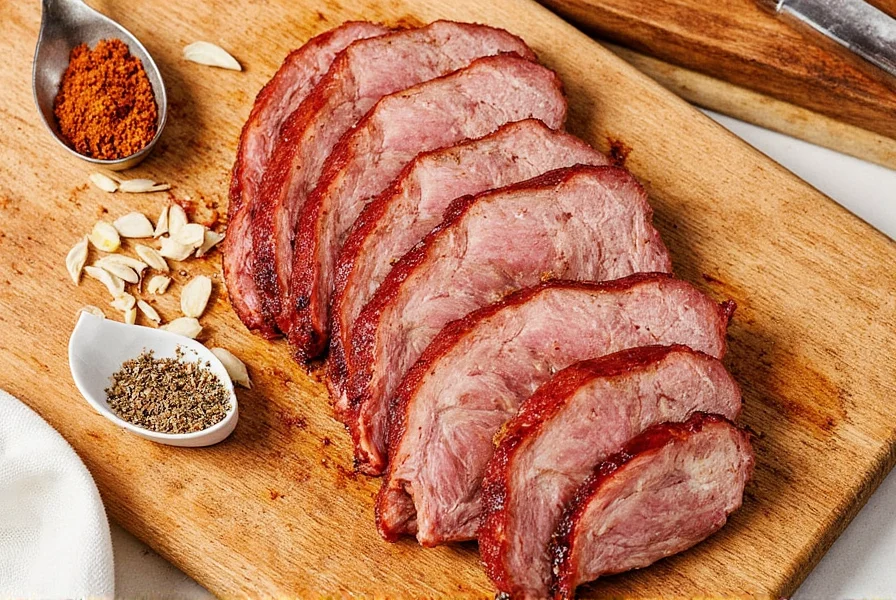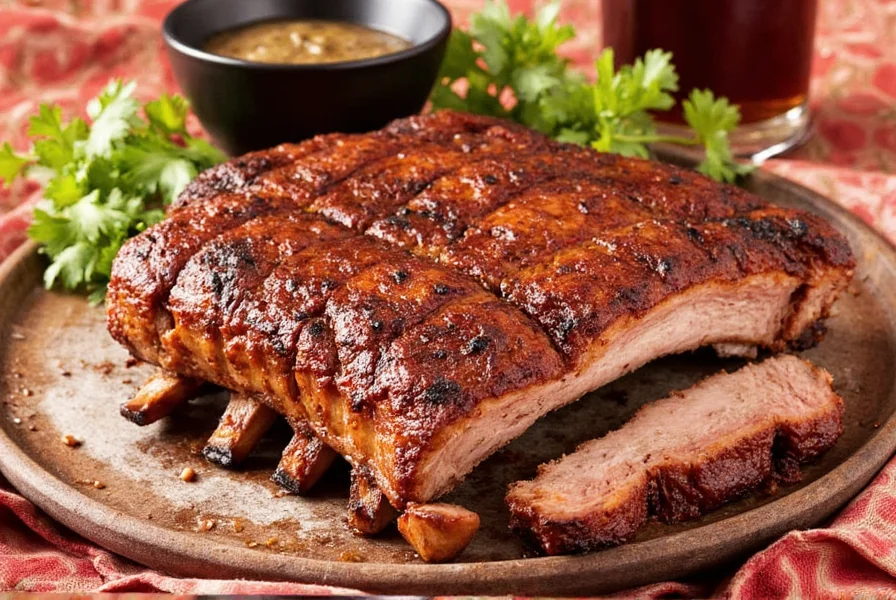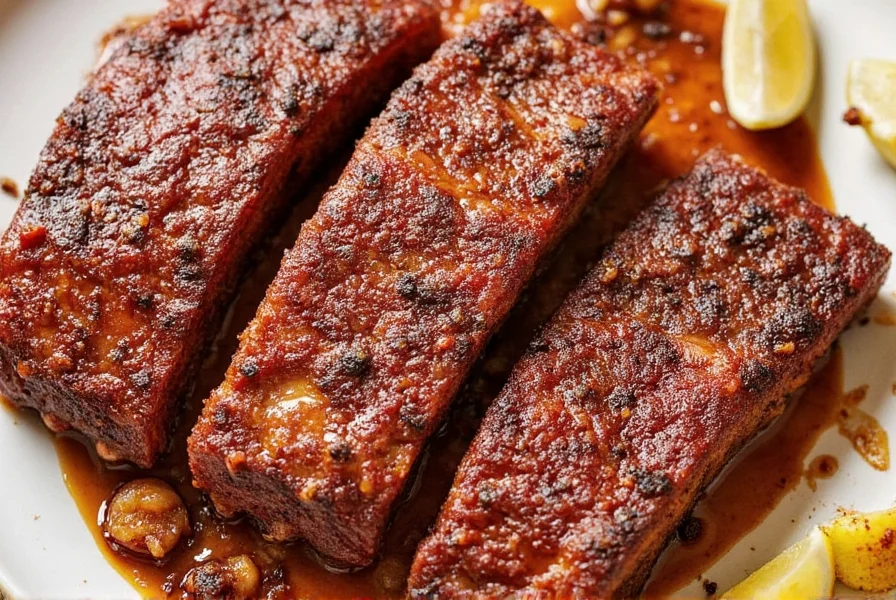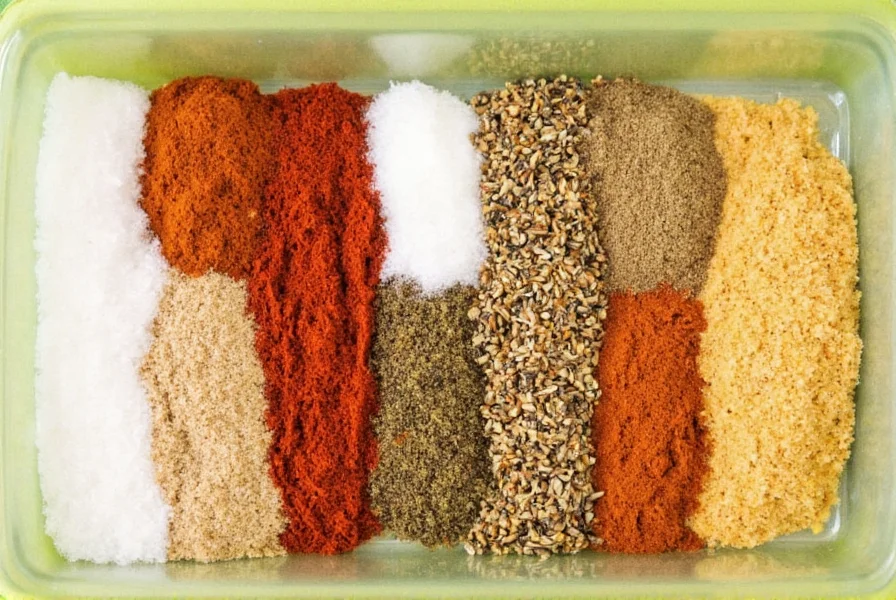4 Proven Rib Rub Recipes for Smoking Ribs
Looking for the best rib rub recipes for smoking ribs? Here are 4 simple, proven recipes that will elevate your barbecue game. Each recipe is easy to make with common ingredients and delivers incredible flavor and texture.
Classic BBQ Rub
This is the go-to recipe for many barbecue enthusiasts. It's simple, bold, and always delivers.
- 1/4 cup brown sugar
- 1/4 cup paprika
- 2 tablespoons garlic powder
- 2 tablespoons onion powder
- 1 tablespoon cumin
- 1 tablespoon black pepper
- 1 tablespoon salt
Mix all ingredients together and apply generously to the ribs. This rub works especially well with hickory or mesquite wood for a deep, smoky flavor.
Sweet & Spicy Rub
If you like a little heat with your sweetness, this is the rub for you. It's perfect for those who enjoy a balance between tangy and fiery flavors.
- 1/2 cup brown sugar
- 1/4 cup paprika
- 1 tablespoon garlic powder
- 1 tablespoon onion powder
- 1 tablespoon cumin
- 1 teaspoon cayenne pepper
- 1 teaspoon salt
Apply this rub and let the ribs sit for at least an hour before smoking. The sugar will caramelize nicely, giving the ribs a glossy finish.
Smoky Paprika Rub
This one is all about the smokiness. If you love the deep, earthy flavor of paprika, this is your new favorite.
- 1/2 cup paprika
- 1/4 cup brown sugar
- 1 tablespoon garlic powder
- 1 tablespoon onion powder
- 1 tablespoon cumin
- 1 teaspoon salt
Use this rub when you want to highlight the smoky notes in your meat. Pair it with oak or cherry wood for a rich, full-bodied flavor.

Garlic Herb Rub
For those who love fresh, aromatic flavors, this rub is a game-changer. It's ideal if you want your ribs to have a bright, herbaceous profile.
- 1/4 cup brown sugar
- 1/4 cup paprika
- 1 tablespoon garlic powder
- 1 tablespoon onion powder
- 1 tablespoon dried thyme
- 1 tablespoon dried oregano
- 1 teaspoon salt
Apply this rub and let it rest for a few hours before smoking. The herbs will infuse the meat with a fragrant, savory aroma.
How to Apply the Rub
Applying the rib rub correctly is just as important as choosing the right recipe. Here's how to do it like a pro:
- Pat the ribs dry: Moisture can prevent the rub from sticking properly. Use paper towels to gently pat the ribs dry.
- Apply evenly: Make sure the rub is spread evenly across both sides of the ribs. You don’t want patches of under-seasoned meat.
- Let it rest: Allow the ribs to sit for at least 30 minutes after applying the rub. This helps the spices penetrate the meat and develop flavor.
- Smoke with care: Once the rub is applied, place the ribs in the smoker and cook at around 225°F (107°C) for several hours until they’re tender and juicy.
Remember, the longer the rub sits on the meat, the more flavor it can impart. So don’t rush the process—patience is key in the world of smoking ribs.
Frequently Asked Questions
How long should I leave the rub on ribs before smoking?
For best results, apply the rub at least 30 minutes before smoking, but ideally 2-4 hours. Many pit masters even apply the rub the night before and refrigerate the ribs overnight. This extended time allows the salt to penetrate deeper into the meat, enhancing flavor and texture. Just be careful not to leave sugar-heavy rubs on for too long at room temperature, as the sugar can begin to break down the meat's surface.
Can I use a rib rub for other meats besides ribs?
Absolutely! Most rib rubs work wonderfully on pork shoulder, chicken, turkey, and even salmon. The key is to adjust the amount based on the meat's surface area and fat content. For leaner meats like chicken breasts, you might want to reduce the salt content. For beef brisket, consider adding a bit more pepper to complement the meat's natural flavor.
Do I need to add oil before applying the rub?
This is a matter of personal preference among pit masters. Some swear by a light coating of mustard, olive oil, or even water to help the rub adhere better, especially with very dry rubs. Others believe that properly dried meat (using paper towels) allows the rub to stick without additional moisture. If you do use oil, use it sparingly—too much can cause the rub to slide off during smoking.
How much rub should I use per rack of ribs?
A good rule of thumb is to use about 2-3 tablespoons of rub per pound of meat. For a standard rack of pork ribs (about 3-4 pounds), you'll want to use roughly 6-12 tablespoons (or 1/3 to 3/4 cup) of rub. Apply it generously but evenly, making sure to cover all surfaces without creating thick clumps that won't adhere properly.
Can I make my rib rub ahead of time?
Yes! In fact, making your rub in larger batches is highly recommended. Most dry rubs will keep for 6-12 months when stored in an airtight container away from direct sunlight and moisture. Just make sure all your ingredients are fresh when you mix them. Sugar-based rubs might clump over time, so adding a few grains of uncooked rice to the container can help absorb moisture and keep the rub free-flowing.
Should I wash off the rub before smoking?
No, never wash off the rub before smoking. The entire purpose of applying the rub is for it to interact with the meat during the cooking process. Washing it off would defeat the purpose. The rub will either form a delicious bark on the exterior or dissolve into the meat during the long, slow cooking process, both of which are desirable outcomes in barbecue.
What's the difference between a dry rub and a marinade for ribs?
Dry rubs primarily season the surface of the meat and create a flavorful crust, while marinades (which contain liquid ingredients) penetrate deeper into the meat. Dry rubs are typically used for longer smoking times as they won't wash away like wet marinades might. Many pit masters actually use both—a dry rub for surface flavor and bark formation, and a mop sauce or spritz during smoking for additional moisture and flavor layers.
| Product | Features | Best For | Price Range |
|---|---|---|---|
| Pitmaster's Blend | Rich blend of paprika, garlic, and cumin | Beginners or casual smokers | $8–$12 |
| Bold & Smoky Rub | Spicy with a hint of sweetness | Those who love heat and flavor | $10–$15 |
| Herb-Infused Rub | Contains dried thyme, oregano, and rosemary | Health-conscious cooks or those who prefer herbal flavors | $9–$13 |
| Custom Rub Kit | Includes a variety of spices for mixing and matching | Advanced cooks who want creative freedom | $15–$20 |
Conclusion: Smoke, Savor, and Enjoy
In the world of barbecue, a good rib rub is everything. It transforms ordinary ribs into something extraordinary, adding depth, flavor, and personality. Whether you make your own or buy a premade blend, the key is to experiment and find what works best for you.
Remember, the journey of mastering rib rub recipes for smoking ribs is part of the fun. So grab your smoker, season your ribs, and get ready to impress your friends and family with a plate of perfectly smoked, flavorful ribs.
And if you ever feel stuck, just remember: sometimes the best rubs are the ones that come with a side of humor. After all, who says spice can't be a little playful?













 浙公网安备
33010002000092号
浙公网安备
33010002000092号 浙B2-20120091-4
浙B2-20120091-4